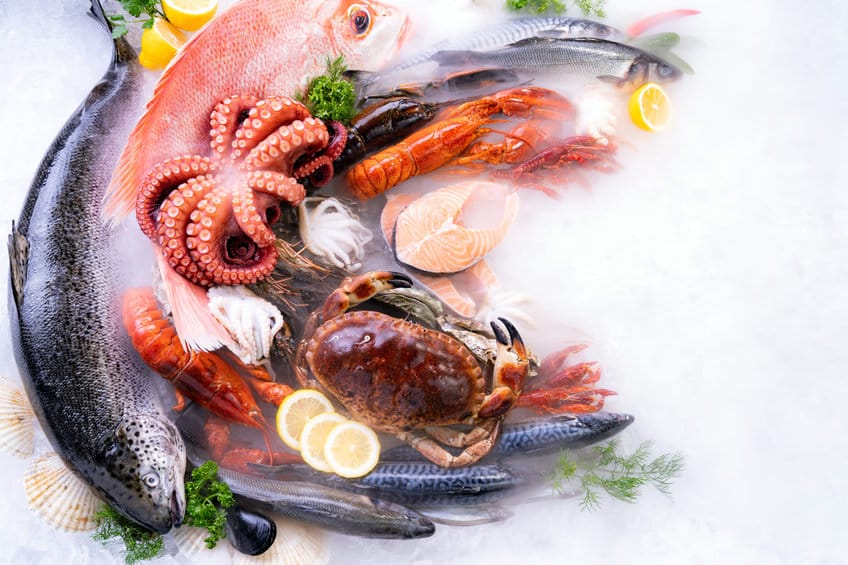By John Salak –
In an admittedly unique twist, the dangerous rise of the powerful greenhouse gas methane may actually provide the gateway to lower costs of protein-rich fishmeal that could help fuel a substantial rise in fish production while helping the environment.
Since fish already provide 17 percent of the world’s consumed animal protein, a healthy boost in farmed fish production could help relieve some pressure on the world’s limited food sources.
This trifecta of lower fishmeal costs, increased food production and lower methane levels are far from a done deal. But independent studies involving a host of universities across the U.S. may provide a grand roadmap.
Stanford University chipped into the process by analyzing the potential for bacteria-fed captured methane to grow into protein-rich fishmeal. It found that the production costs involving methane captured from certain sources in the U.S. are lower than conventional fishmeal. It went further by identifying feasible cost reductions that could make the approach profitable, possibly making it capable of meeting all global fishmeal demand.
“Industrial sources in the U.S. are emitting a truly staggering amount of methane, which is uneconomical to capture and use with current applications,” reported Sahar El Abbadi, who conducted the Stanford research as a graduate student. “Our goal is to flip that paradigm, using biotechnology to create a high-value product,” added El Abbadi, a Stanford lecturer. 
The Stanford approach theoretically tackles two different problems: It lowers the cost of fishmeal, while possibly reducing methane gas concentrations, which it reported causes one million premature deaths globally due to respiratory illnesses. Chances are the impact of methane gas will only grow if uncheck as its relative concentration has been rising more than twice as fast as that of carbon dioxide since the beginning of the Industrial Revolution.
They maintain potential joint solution lies in methane-consuming bacteria called methanotrophs. They can be grown in a chilled, water-filled bioreactor fed pressurized methane, oxygen and nutrients such as nitrogen, phosphorus and trace metals. The protein-rich biomass that’s a byproduct of the process can then be used as fishmeal in aquaculture feed. In turn, this would offset that demand for fishmeal made from small fish or plant-based feeds that require land, water and fertilizer.
“While some companies are doing this already with pipeline natural gas as feedstock, a preferable feedstock would be methane emitted at large landfills, wastewater treatment plants and oil and gas facilities,” explained Craig Criddle, a co-author of the study. “This would result in multiple benefits. including lower levels of potent greenhouse gas in the atmosphere, more stable ecosystems and positive financial outcomes.”
The approach may go beyond being simply climate-friendly. Stanford’s team believes that in certain circumstances, fishmeal generated from the methane-fed bacteria would be produced for about 20 percent less than traditional fishmeal. Production costs could go even lower with additional modifications.
A significant reduction in fishmeal cost not only promises to make the process profitable, but it could also have a whopping impact on animal-sourced seafood since fish farms now account for about half of the global production.
A group of like-minded scientists probably welcome Stanford’s report since they are urging global policymakers to think of fish as a solution to food insecurity.
They, in fact, recently published a paper in the professional journal Ambio that stressed the need to consider fish in a broader conversation on food and nutrition security and equity, especially as global food systems will face increasing threats from climate change.
The “Fish as Food” paper involved scientists and policy experts from Michigan State University, Duke University, Harvard University, World Bank and Environmental Defense Fund, among others. The paper warned that the global development community is not on track to meet goals for alleviating malnutrition and that the problem is likely to grow worse as the number of malnourished people worldwide is likely to increase from 678 million in 2018 to 841 million by 2030.
Fish already provides almost 20 percent of the animal protein consumed globally. They are also rich in micronutrients, essential fatty acids and protein essential for cognitive development and maternal and childhood health, which is especially for many in developing countries. Yet these scientists and policymakers argue that fish is largely missing from key global food policy discussions.
“Fish has always been food. But in this paper, we lay out an agenda for enhancing the role of fish in addressing hunger and malnutrition,” reports Abigail Bennett, assistant professor at Michigan State University. “We are urging the international development community not only to see fish as food but to recognize fish as a nutrient-rich food that can make a difference for the well-being of the world’s poor and vulnerable. What kinds of new knowledge, policies and interventions will be required to support that role for fish?” she asked.
“Fish—and aquatic foods in general—are largely ignored in the food policy dialogue,” added Kristin Kleisner, lead senior scientist for the Environmental Defense Fund Oceans program and a co-author of the paper. “This is a huge oversight, as fish offers a critical source of nutrition unparalleled by any other type of food, and it is often the only source of key nutrients for vulnerable populations around the world.”
The Fish as Food paper doesn’t specifically address the work conducted at Stanford, but its authors would likely hail the fish-first focus of the university’s work if not the exact fishmeal production process. That it has the potential to turn a profit probably makes it all the more tantalizing.












